- Clone
- 5A5 (See other available formats)
- Regulatory Status
- RUO
- Other Names
- Poly (ADP-ribose) polymerase
- Isotype
- Mouse IgG1, κ
- Ave. Rating
- Submit a Review
- Product Citations
- publications
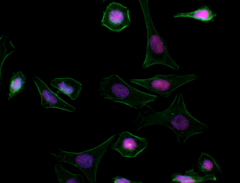
-

HeLa cells were fixed with 1% paraformaldehyde (PFA) for 10 minutes, permeabilized with 0.5% Triton X-100 for 10 minutes, and blocked with 5% FBS for 30 minutes. Then the cells were intracellularly stained with 5 µg/ml of Alexa Fluor® 647 anti-PARP (clone 5A5) (red) in blocking buffer overnight followed by Alexa Fluor® 594 Phalloidin (green) staining for 10 minutes at room temperature. Nuclei were counterstained with DAPI (blue). The image was captured with 40X objective. -

Human paraffin-embedded tonsil tissue slices were prepared with a standard protocol of deparaffinization and rehydration. Antigen retrieval was done with Tris-Buffered Saline 1X (1.0M, pH 7.4) at 95°C for 40 minutes. Tissue was washed with PBS/ 0.05% Tween 20 twice for five minutes, permeabilized with 0.5% Triton X‐100 for ten minutes, and blocked with 5% FBS and 0.2% gelatin for 30 minutes. Then, the tissue was stained with 5 µg/ml of Alexa Fluor®647 anti-PARP (clone 5A5)(Red) and costained with Alexa Fluor®594 CD8a(clone C8/144B)(Green) at 4°C overnight. The nuclei were counter staining with DAPI (blue). The image was captured with a 10X objective. -

Human paraffin-embedded Breast Cancer tissue slices were prepared with a standard protocol of deparaffinization and rehydration. Antigen retrieval was done with Tris-Buffered Saline 1X (1.0M, pH 7.4) at 95°C for 40 minutes. Tissue was washed with PBS/ 0.05% Tween 20 twice for five minutes, permeabilized with 0.5% Triton X‐100 for ten minutes, and blocked with 5% FBS and 0.2% gelatin for 30 minutes. Then, the tissue was stained with 5 µg/ml of Alexa Fluor®647 anti-PARP (clone 5A5)(Red) and costained with Alexa Fluor®488 anti-human CD326(EpCAM) (clone9C4)(Green) at 4°C overnight. The nuclei were counter stained with DAPI (blue). The image was captured with a 10X objective.
| Cat # | Size | Price | Quantity Check Availability | Save | ||
|---|---|---|---|---|---|---|
| 614308 | 100 µg | 352€ | ||||
PARP (Poly (ADP-ribose) polymerase) is a 113 kD nuclear protein that can exist as a homo- or hetero-dimer. This protein acts as a molecular "nick sensor" and functions in base excision repair, poly(ADP-ribosyl)ation of acceptor proteins involved in chromatin architecture and DNA metabolism and participates in protein modification to enhance or repress transcription. PARP is ribosylated by PARP2 and is a target for caspase cleavage during apoptosis. PARP interacts with proteins in the base excision repair complex containing at least XRCC1, PARP2, POLB and LIG3. In addition PARP forms heterodimers with PARP2, and interacts with PARP3. The 5A5 monoclonal antibody recognizes the N-terminal region of human and mouse PARP and has been shown to be useful for Western blotting and immunofluorescence staining.
Product DetailsProduct Details
- Verified Reactivity
- Human
- Antibody Type
- Monoclonal
- Host Species
- Mouse
- Immunogen
- Recombinant (partial), N-terminal 2/3 sequence of PARP
- Formulation
- Phosphate-buffered solution, pH 7.2, containing 0.09% sodium azide.
- Preparation
- The antibody was purified by affinity chromatography and conjugated with Alexa Fluor® 647 under optimal conditions.
- Concentration
- 0.5 mg/mL
- Storage & Handling
- The antibody solution should be stored undiluted between 2°C and 8°C, and protected from prolonged exposure to light. Do not freeze.
- Application
-
ICC - Quality tested
IHC-P - Verified - Recommended Usage
-
Each lot of this antibody is quality control tested by immunocytochemistry. For immunocytochemistry, the suggested use is 2.5 - 5.0 µg/mL. For immunohistochemistry on formalin-fixed paraffin-embedded tissue sections, a concentration range of 5.0 - 10 µg/mL is suggested. It is recommended that the reagent be titrated for optimal performance for each application.
* Alexa Fluor® 647 has a maximum emission of 668 nm when it is excited at 633 nm / 635 nm.
Alexa Fluor® and Pacific Blue™ are trademarks of Life Technologies Corporation.
View full statement regarding label licenses - Excitation Laser
-
Red Laser (633 nm)
- Application Notes
-
This antibody recognizes N-terminal short cleaved PARP after Staurosporine treatment at around 24kDa.
- Application References
- RRID
-
AB_2721277 (BioLegend Cat. No. 614308)
Antigen Details
- Structure
- PARP family, BRCT domain, homo- or hetero-dimer; 113 kD
- Distribution
-
Nuclear
- Function
- Molecular "nick sensor"; base excision repair, catalyzes poly(ADP-ribosyl)ation of acceptor proteins involved in chromatin architecture, DNA metabolism; protein modification may enhance or repress transcription
- Interaction
- Component of a base excision repair complex containing at least XRCC1, PARP2, POLB and LIG3. Heterodimerizes with PARP2, interacts with PARP3, modifies TATA-BP, YY1, Sp1, NF-B, p53 and others
- Modification
- Ribosylation by PARP2
- Biology Area
- Apoptosis/Tumor Suppressors/Cell Death, Cell Biology, DNA Repair/Replication, Transcription Factors
- Molecular Family
- Nuclear Markers
- Antigen References
-
1. Cherney B, et al. 1987. P. Natl. Acad. Sci. USA 84:8370.
2. Ikejima M, et al. 1990. J. Biol. Chem. 265:21907.
3. Ying W, et al. 2001. P. Natl. Acad. Sci. USA 98:12227.
4. Noel G, et al. 2003. BMC Cell Biol. 4:7. - Regulation
- Poly(ADP-ribose) glycohydrolase removes ribose chains, allows quick, transient ribosylation of proteins
- Gene ID
- 142 View all products for this Gene ID
- UniProt
- View information about PARP on UniProt.org
Related FAQs
Other Formats
View All PARP Reagents Request Custom Conjugation| Description | Clone | Applications |
|---|---|---|
| Purified anti-PARP | 5A5 | WB,KO/KD-WB,ICC,IHC-P |
| Alexa Fluor® 594 anti-PARP | 5A5 | ICC,IHC-P |
| Alexa Fluor® 647 anti-PARP | 5A5 | ICC,IHC-P |
Compare Data Across All Formats
This data display is provided for general comparisons between formats.
Your actual data may vary due to variations in samples, target cells, instruments and their settings, staining conditions, and other factors.
If you need assistance with selecting the best format contact our expert technical support team.
-
Purified anti-PARP
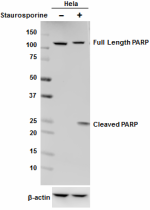
Western blot analysis of cell lysates from HeLa cells, untre... 
Total lysates (15 µg protein) from 293T and 293T/PARP knockd... 
HeLa cells were fixed with 1% paraformaldehyde (PFA) for 10 ... 
IHC staining using purified anti-PARP antibody (clone 5A5) o... -
Alexa Fluor® 594 anti-PARP
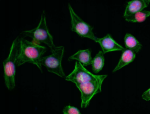
HeLa cells were fixed with 1% paraformaldehyde (PFA) for 10 ... 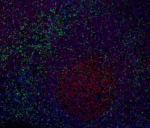
Human paraffin-embedded tonsil tissue slices were prepared w... 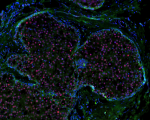
Human paraffin-embedded Breast Cancer tissue slices were pre... 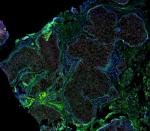
Human paraffin-embedded Breast Cancer tissue slices were pre... -
Alexa Fluor® 647 anti-PARP
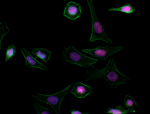
HeLa cells were fixed with 1% paraformaldehyde (PFA) for 10 ... 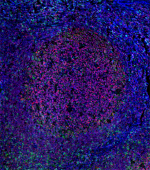
Human paraffin-embedded tonsil tissue slices were prepared w... 
Human paraffin-embedded Breast Cancer tissue slices were pre...
 Login / Register
Login / Register 












Follow Us